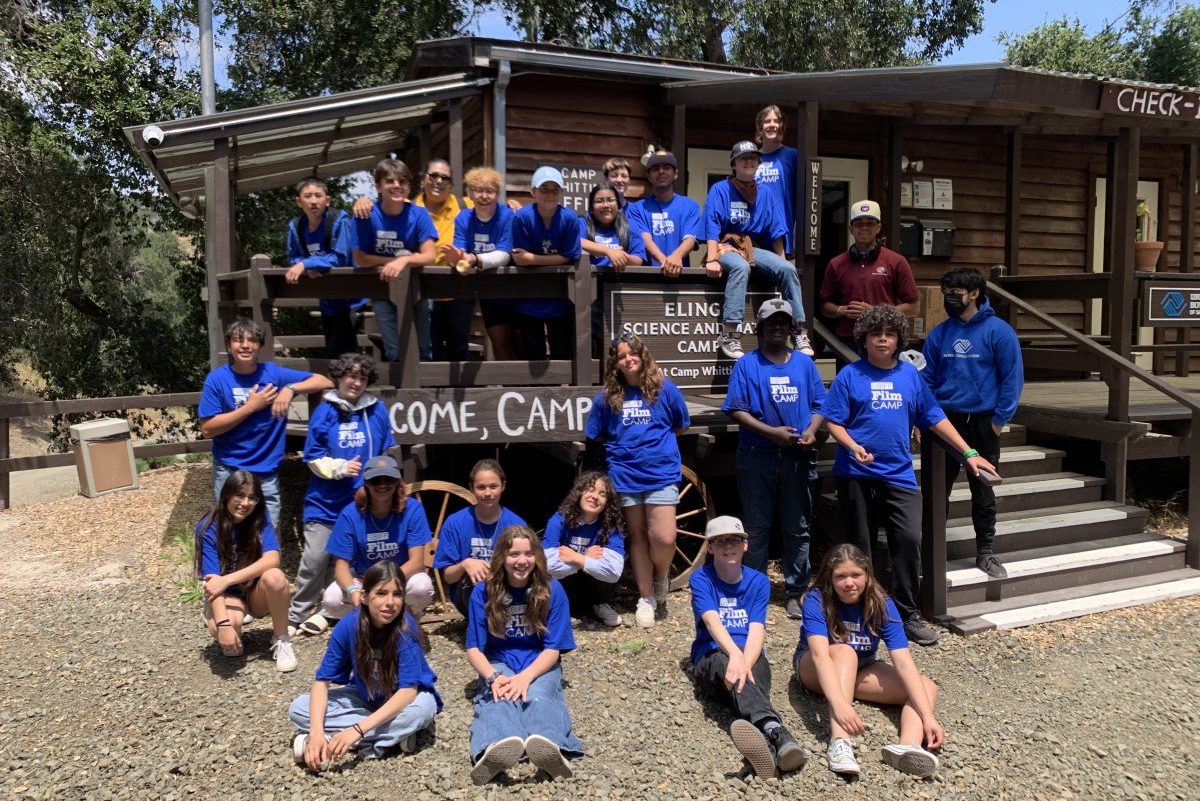Camp Whittier, an outdoor camp tucked within the oak forests of the Santa Ynez Mountains, boasts the usual amenities of a sleepaway camp: picnic tables, playing fields, ropes courses, and a swimming pool. But on Thursday, June 15, the grounds were absent of one thing: campers. They could be found in Creek Lodge, surrounding computers open to iMovie, carefully examining every frame in their newest short films. The sun would come out tomorrow, but these campers had a deadline to make.
From Sunday to Friday, the Santa Barbara International Film Festival (SBIFF) ran their annual summer Film Camp, a collaboration with the United Boys & Girls Club (UBGC) of Santa Barbara County. After applying and being selected by UBGC centers throughout the county, 25 campers ranging from age 12-17 were offered the chance to learn the ins and outs of the film industry. Over the week, the campers pitched their ideas, wrote scripts, created storyboards, shot and edited the footage, and hosted a climactic premiere for their families.
“They’re seeing every stage of the filmmaking process,” said Claire Waterhouse, SBIFF’s Education manager and director of the camp. Campers record their films on iPhones and edit them on Apple’s free iMovie software, both tools that can be easily attained at home. “Accessibility is the biggest thing; we want to make sure that they have access to it,“ said Waterhouse.
When I visited Camp Whittier, as the finishing touches were being made to their projects, the students readily showed me their projects, giggling as they watched themselves acting and explaining the bits that haven’t been quite finished.
“They’re very excited about their cuts, and what they filmed, and they really love the films they made,” said Waterhouse.
Amid a busy production schedule, the campers make time to enjoy the traditional camp fare. “We have a great mixture,” said Waterhouse. “They’re learning about technology, but they also take breaks, and we make sure that they’re participating in nature.” For 15 year-old Vincent Prez, the film and outdoor aspects of camp harmonize. “It’s really fun being out in nature, and it gives you so many filming opportunities,” he said.
Waterhouse noted that the wooded setting inspires spooky campfire stories from the filmmakers, each cohort producing a healthy batch of horror flicks. They also expand into dramas, comedies, and even satire, as Prez described his group’s spin on the 1976 film Rocky. “You know, ‘Eye of the Tiger,’ classic Rocky.”

As several campers noted, filmmaking is no easy task. Giselle Delgado, a 13-year-old from Santa Barbara, asserted, “A lot goes into making a single movie, you know?” Luckily, SBIFF brings in impressive industry professionals throughout the week to guide and advise the campers. On Thursday, they welcomed production and art designers David Wasco and Sandy Reynolds-Wasco, who won an Academy Award for Production Design on La La Land, in addition to boasting an impressive filmography featuring the films of Quentin Tarantino and Wes Anderson. For an hour and a half, campers listened intently as the Wascos described the challenges of shutting down a Los Angeles freeway for the opening sequence of La La Land, or creating the iconic Jack Rabbit Slim’s restaurant in Pulp Fiction. With an emphasis on problem-solving and developing a wide range of visual influences, the Wascos offered tools for success to the young filmmakers.
“It just makes me appreciate … how much work goes into a film,” said Prez, a fan of the Wascos’ work, and first in line to get their autograph on a Pulp Fiction poster.
“Just the fact that you could go to a beautiful place and learn about film is pretty fabulous,” said Sandy Reynolds-Wasco after speaking with the campers. For the retired industry veterans, Film Camp offers a way to give back to future generations of filmmakers. “In the group that we just talked to, I see myself,” said David Wasco, recalling his own first experiences with film in a high school film class. “A year or two from now, it could be the next Damien [Chazelle].”
Providing the youth with an enthusiasm for the medium is the ultimate goal for SBIFF’s Film Camp, and as Waterhouse said, “It’s really fun to see that little lightbulb go on: ‘Oh, I just made a movie; I acted; I helped with the camera; that was fun.’”
For some, the camp becomes the first glimpse of the possibilities of the film industry, and with SBIFF’s other educational offerings, Hollywood feels closer to these campers than a few hours’ drive on Highway 101.
“I still have a lot of time until then,” said Giselle Delgado when asked about the film industry, “but I’m thinking about it.” From the looks of it, these short films could start the first of many impressive filmographies — something that can’t be said of every sleepaway camp.
For more information, see sbiff.org.





You must be logged in to post a comment.